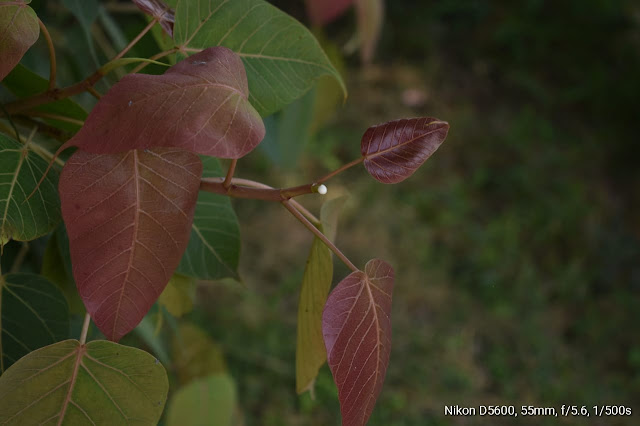Nature Photography Equipment - Photographer Choices
Nature Photography Equipment-
In my previous post, we discuss Nature Photography and Nature photography blur background. In this post, I give some own ideas of Nature Photography Equipment, which is a really good focus and sharp photography.
Photography Equipment-
1.Cameras
2.Lenses
3.Tripods
4.Filters
5.Flash
6.Correct Exposures
7. Light etc.
1. Cameras-
DSLR Camera and Mirrorless camera (DSLM)
A DSLR (digital single-lens reflex) camera with interchangeable lenses will give you versatility. The ability to grow and upgrade over time. In a DSLR light reflects the mirror up to the viewfinder.
Fixed-lens cameras can be used for the micro-photography or close-ups photography, but are generally not well suited for fare
nature photography, and will have limitations for any subject.
A Mirrorless camera is an interchangeable-lens camera.
Mirrorless cameras also called Mirrorless Camera (DSLM). In a mirrorless camera, there is no viewfinder. Instead, the imaging sensor is exposed to light at all times. This gives you a digital preview of your image eighter on the electronic viewfinder.
Mirrorless Camera
With vibration reduction(VR) image stabilization technology to achieve the best sharpness. Support the lens with your left hand under the barrel. Tripod gives a better result to focus on the subject and click the good image. I always used a tripod. It's my suggestion you must be also used.
The filter itself has essentially no positive effect on the image quality, but it can also protect from blowing dust. Filter used for nature photos are color-correcting, graduated natural density. It reduces glare, deepness the blue of sky, and enhances rainbows.
What kinds of content would you like to see more on this blog?
Thank you!
nature photography, and will have limitations for any subject.
A Mirrorless camera is an interchangeable-lens camera.
Mirrorless cameras also called Mirrorless Camera (DSLM). In a mirrorless camera, there is no viewfinder. Instead, the imaging sensor is exposed to light at all times. This gives you a digital preview of your image eighter on the electronic viewfinder.
Mirror Camera
Lenses-
Different types of
lenses used to good photography. The portrait lens used for background blur and focus on an object. you can also use the kit lens for good photographs. I have Nikon D5300, I always prefer kit lens for Nature photography.
Tripods-
Tripod used with a 200mm lens, shoot faster than 1/200 seconds.With vibration reduction(VR) image stabilization technology to achieve the best sharpness. Support the lens with your left hand under the barrel. Tripod gives a better result to focus on the subject and click the good image. I always used a tripod. It's my suggestion you must be also used.
Filters-
The filter itself has essentially no positive effect on the image quality, but it can also protect from blowing dust. Filter used for nature photos are color-correcting, graduated natural density. It reduces glare, deepness the blue of sky, and enhances rainbows.
Flash-
Different types of flash available in the market depends on your subject need for flash and type of flash. It is not commonly used for Nature Photography subjects. For macro work, there are specialty flashes and flash brackets that are used to get light into a very small, close object. The pop-up flashes found on some cameras are not particularly useful for most nature photos.
Different types of flash available in the market depends on your subject need for flash and type of flash. It is not commonly used for Nature Photography subjects. For macro work, there are specialty flashes and flash brackets that are used to get light into a very small, close object. The pop-up flashes found on some cameras are not particularly useful for most nature photos.
Exposure-
Achieving correct exposure is fundamental to making good photos. The camera’s meter assumes the scene is middle-toned, not light or dark, and will give correct exposure for mid-tone. But nature is full of subjects that are not middle-tone, such as sunrises and sunsets, polar bears in snow, blackbirds, or white flowers.
Achieving correct exposure is fundamental to making good photos. The camera’s meter assumes the scene is middle-toned, not light or dark, and will give correct exposure for mid-tone. But nature is full of subjects that are not middle-tone, such as sunrises and sunsets, polar bears in snow, blackbirds, or white flowers.
Exposure
is controlled in any camera by ISO, shutter speed, and f-stop. You change the ISO depending on available light.
Light-
Light is another element that has a profound effect on the outcome and artistry of an image. The type of light and color of light are important factors in your image.
On digital cameras, you can set the white balance for
cloudy or shade conditions. Or you can correct in a photo editing software in
several different ways. Light is another element that has a profound effect on the outcome and artistry of an image. The type of light and color of light are important factors in your image.
What kinds of content would you like to see more on this blog?
Thank you!






Comments
Post a Comment